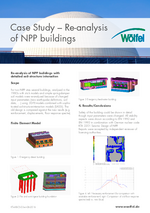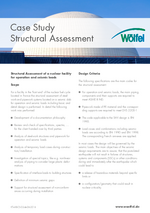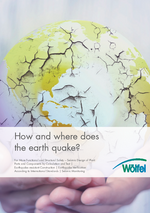
In an LNG terminal, which was built in a region with high seismic risk, continuous earthquake monitoring of the storage vessels and plant components had to be ensured. Furthermore, it had to be ensured that in case of an earthquake, appropriate messages
are displayed in the control room and measures for personal and plant protection are automatically initiated.

On 16 July 2007, a strong earthquake, the Niigataken-chuetsu-oki earthquake (NCOE) affected the Tokyo Electric Power Company (TEPCO) Kashiwazaki-Kariwa Nuclear Power Station, the biggest nuclear power plant in the world, located at about 16 km from the epicenter. The large amount of observations and data collected led to the organization of the Kashiwazaki-Kariwa Research Initiative for Seismic Margin Assessment (KARISMA). Woelfel Beratende Ingenieure (Woelfel), Hoechberg, Germany was active during all three phases of the KARISMA Benchmark, starting with the generation and verification of the Finite Element (FE) model of the reactor building in Phase I.

For two NPP sites several buildings, analysed in the 1980s with stick models and simple spring-dampersoil models were re-analysed because of changed input parameters (new earthquake definitions, soil data, …) using 3D-FE-models combined with sophisticated soil-structure-interaction models (SASSI).

For a facility in the ‘front end’ of the nuclear fuel cycle located in France the structural assessment of steelwork and pipework systems located on a seismic slab for operation and seismic loads including basic and detail design is performed.

![[Translate to English:] [Translate to English:]](/fileadmin/_processed_/b/b/csm_2021-12-foerderband-saftflaschen-iStock-1253733832-gekauftk_5764ae728a.jpg)

